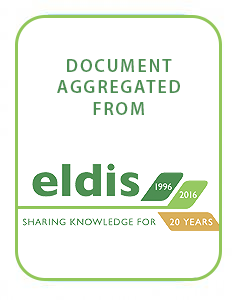Resource information
Climate change poses severe threats on agriculture. Even though some countries may experience beneficial change to agricultural gross domestic product (GDP), the majority, particularly developing countries, will experience significant negative impacts. This paper by the Food and Agriculture Organisation of the United Nations (FAO) promotes an integrative, holistic framework for climate change adaptation. It presents the potential impacts of climate change and the different approaches to adaptation, as well as knowledge gained through FAO's experience in the field. According to the report, there are two forms of climate change adaptation in agriculture: autonomous adaptation, in which individuals reactively adapt to changing conditions, and planned adaptation, which requires conscious policy options and response strategies aimed at altering the adaptive capacity of the agricultural system. The report states that a framework for climate change adaptation must simultaneously include:
legal and institutional elements, such as legislation, human rights, tenure and ownership, and regulatory tools
policy and planning elements, such as risk assessment and monitoring, strategy formulation, analysis and sectoral measures
cropping, livestock, forestry, fisheries and integrated farming system elements covering crop and livestock production and methods, as well as water and land use management
ecosystem elements, including biodiversity, resilience and species composition
the linking of climate change adaptation processes and technologies to promote carbon sequestration and low carbon energy.
The report elaborates on required adaptation measures by providing information on the work that FAO does in relation to climate change. Although these measures should be considered holistically, the paper breaks it down by subsector for ease of reference. Sections include land use and resource management (water, forestry, soil, livestock and fisheries), agrobiodiversity, food security, crop yield forecasts, rural livelihoods, capacity building and knowledge transfer. It suggests that due to FAO's diverse range of expertise, it is well placed to facilitate an integrated approach to climate change adaptation.



